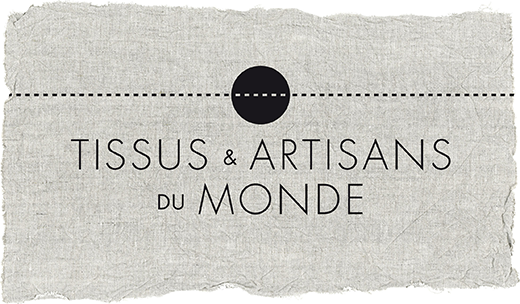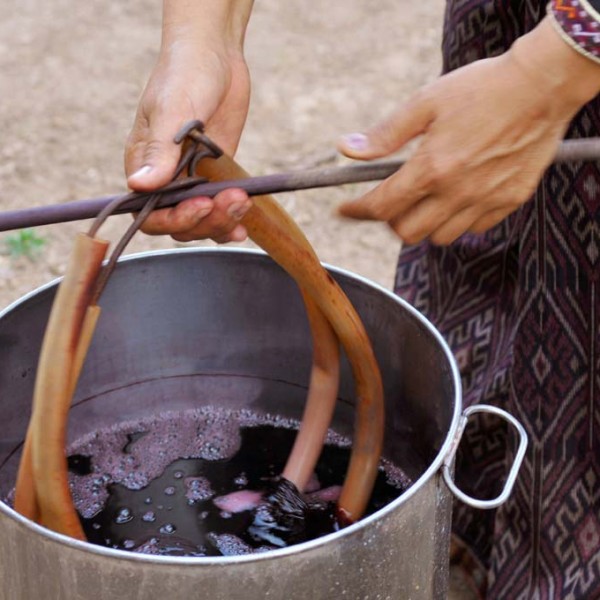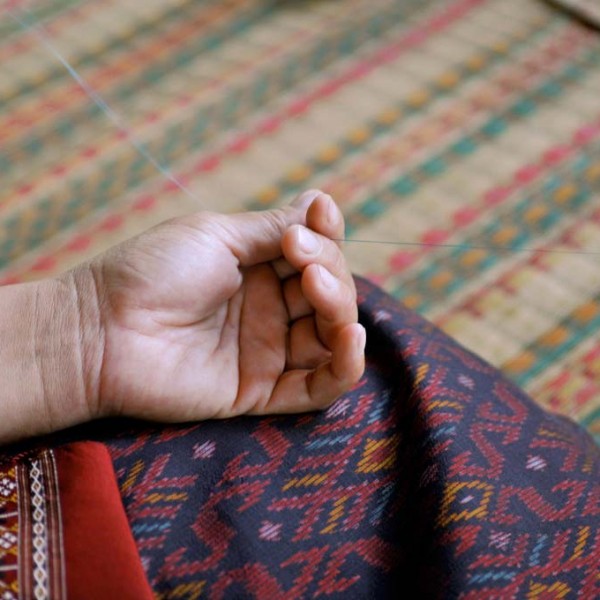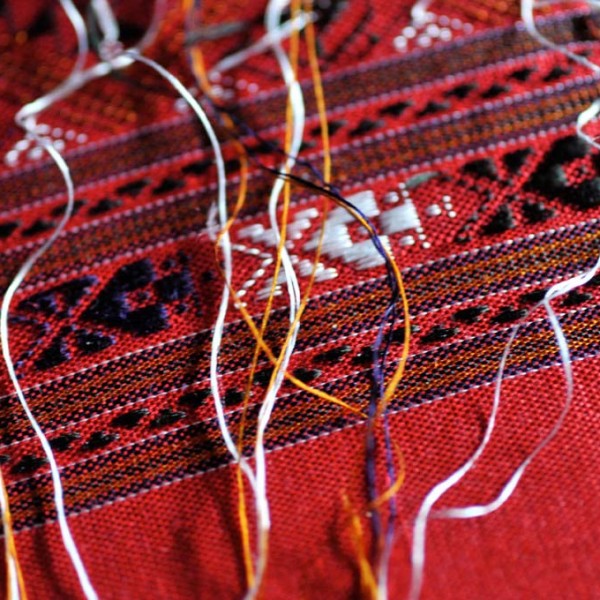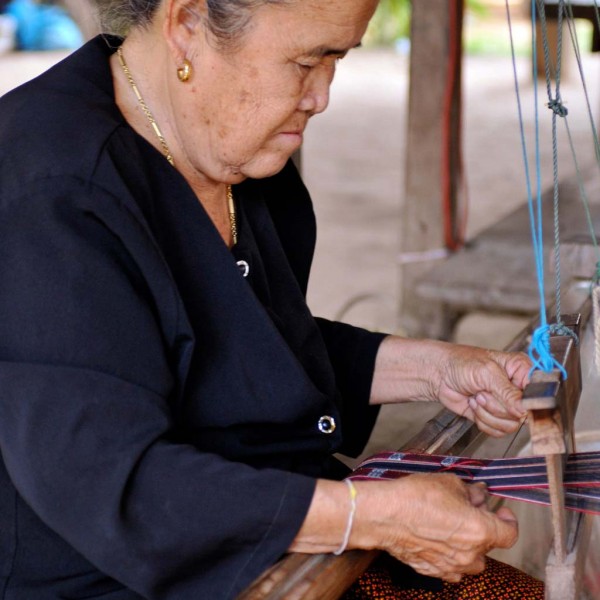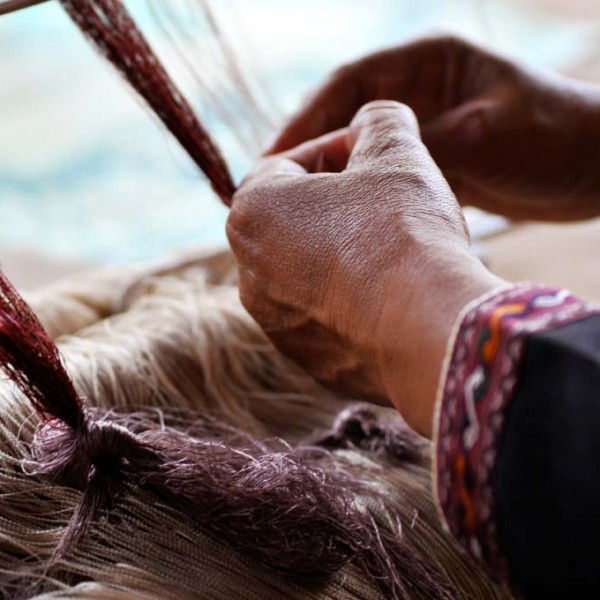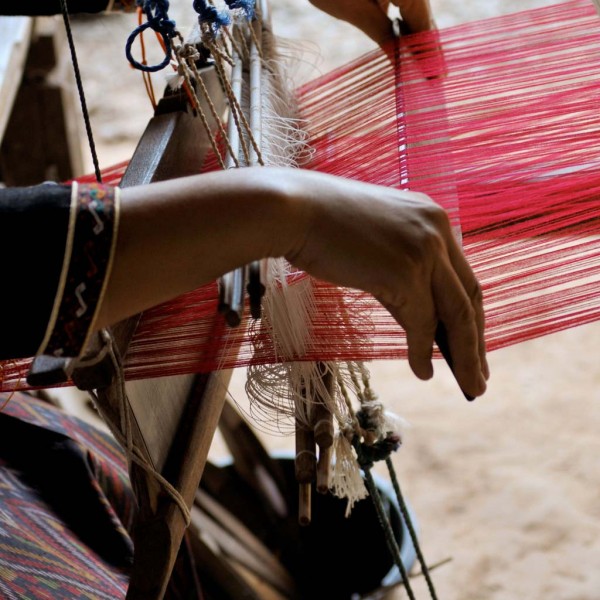Red is the color.
Far away from the beaches overcrowded with tourists and Bangkok madness, I have travelled to the North East of Thailand, in Isan, a rural area on the Laotian and Cambodian borders. In of Isan’s province, in Kalasin, we can find a unique silk called Phrae Wa.
This textile is so rare that Her Majesty the Queen Sirikit has expressed the wish to promote and support its production, to ensure a local and international awareness. Each year, is even held in Kalasin the Phrae Wa Silk Festival to pay tribute to the queen’s commitment and to offer a week of festivities such as fashion shows, contests for the most beautiful piece and weaving demonstrations.
Phrae Wa is a unique style of handwoven fabric, made specifically by the Phu Tai community women who live in this area of Thailand. These women wear their designs in various ways : as a scarf, but also as a sarong or a belt and they also use them to adorn their dark shirts’ collars and sleeves.
The wraparound skirts are woven in the ikat technique, called Mudmee in thai, and they’re decorated with a striped border. The traditional shawl, the “Pha Phrae Wa“, is divided in two sections: the main part is in brocade “Lai Lak “, and the edge is a thin stripe pattern known as “Lai Thaep”. It is worn asymmetrically, draped over one shoulder and tied at the back.
The silk yarns are colored with natural dyes and the textiles have traditionally a red background obtained with organic lacquer, coming from lac insects excrements.
With the brocade technique, silk yarns are handwoven, inserted as additional wefts, in order to create patterns contrasting with the red background canvas. On one piece of cloth, you can find up to a dozen of different patterns, each expressing symbols and beliefs of the Phu Tai community. For example, the typical snake motif “lai nak” represents the ancestors. Phu Tai women keep wearing their traditional dress for ceremonies and to attend local festivities, such as the Bun Bang Fai, the Rocket festival which takes place at the beginning of the rainy season , but also for weddings or healing rituals.
With the recognition of the Phrae Wa uniqueness, Phu Tai weavers have preserved their ancestral textile culture which is the pride and symbol of their community. They are now selling their designs across the country developing weavings in less typical colors from purple to beige. They thus are able to provide higher incomes, in one of Thailand’s poorest area.
